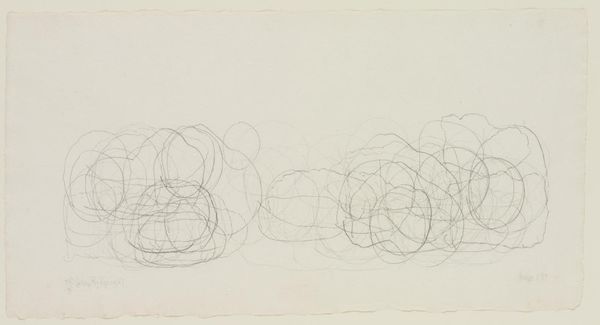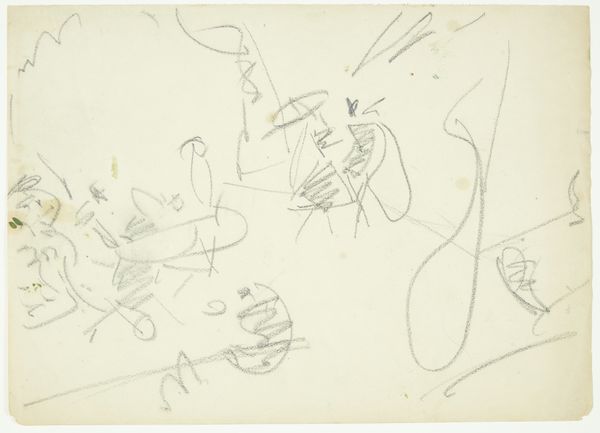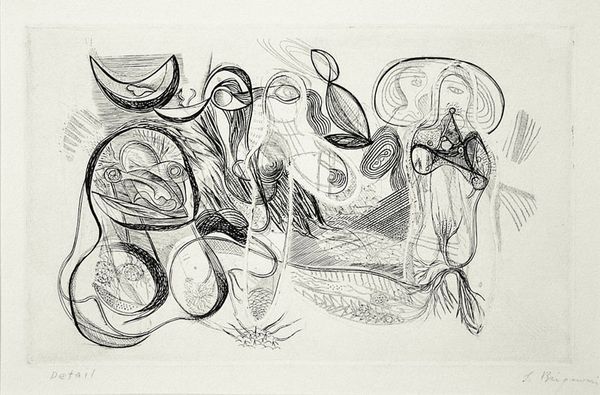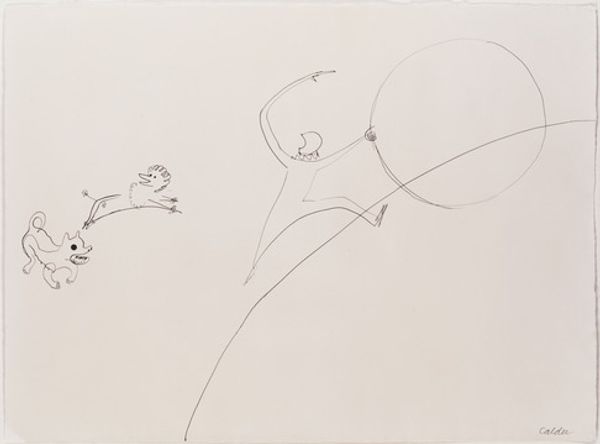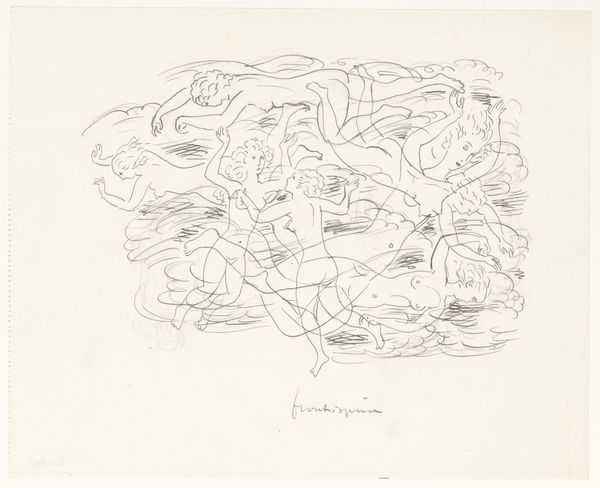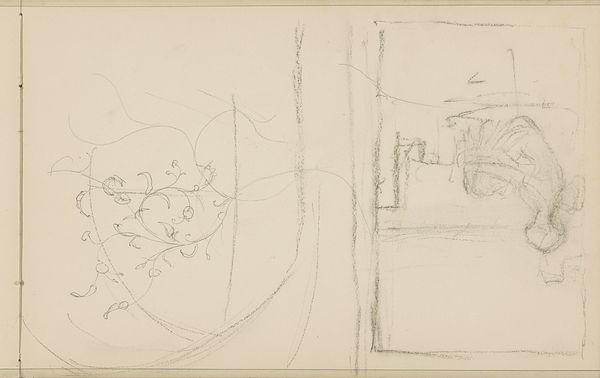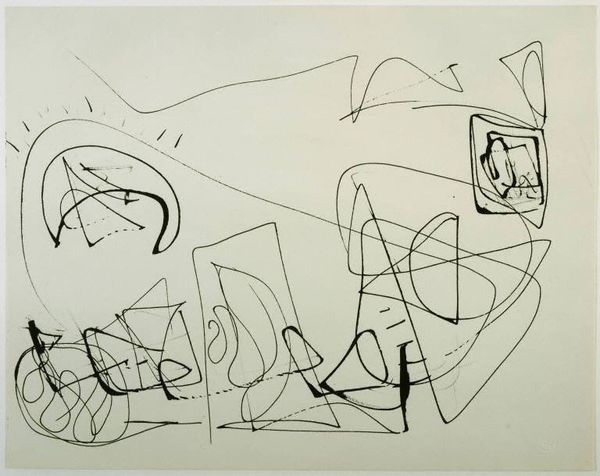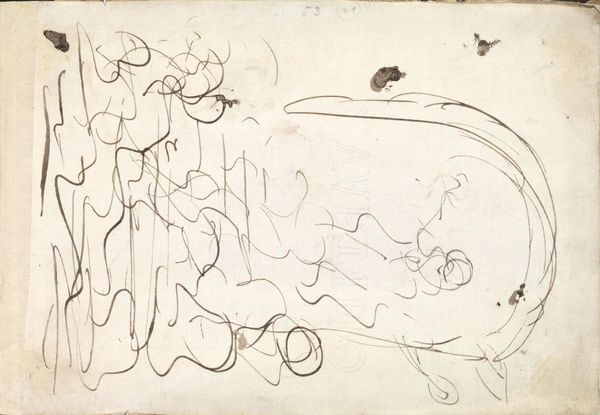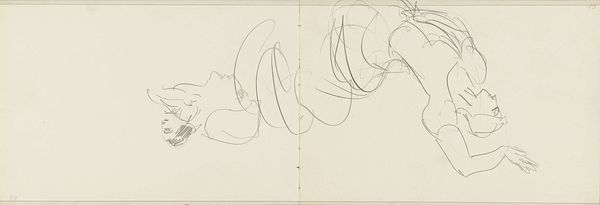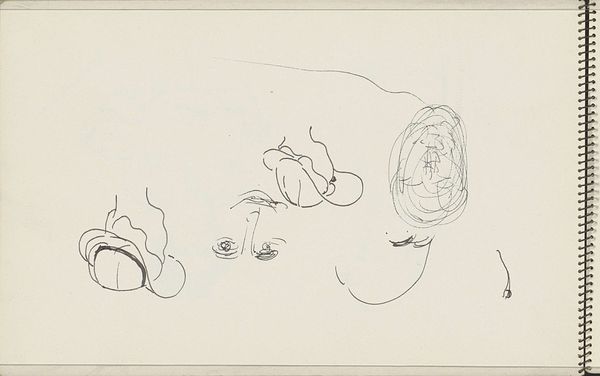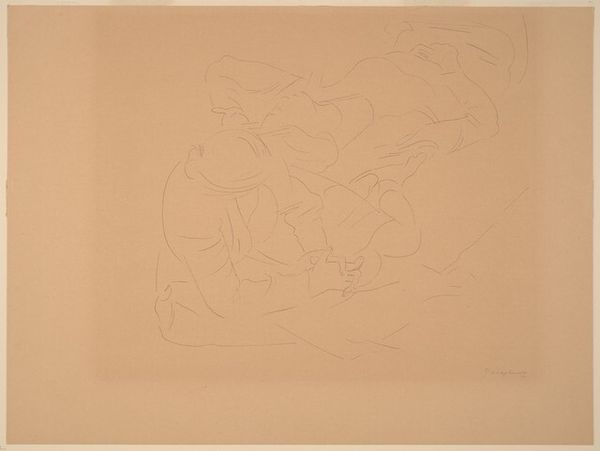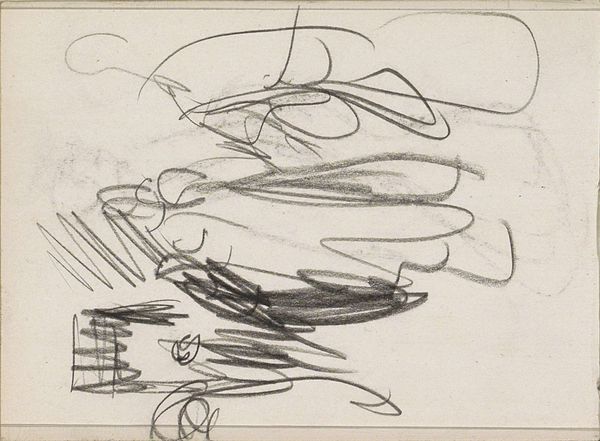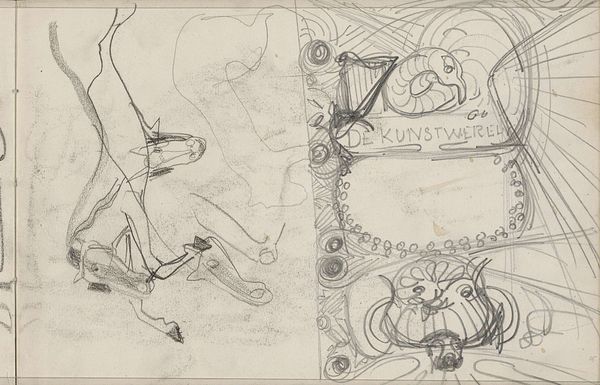
Jacket cover for Antonin Artaud's "Galapagos-Les Iles du bout du monde", Paris, 1955 1955
0:00
0:00
collage, print, ink
#
collage
# print
#
pen sketch
#
figuration
#
ink
#
surrealism
Copyright: National Gallery of Art: CC0 1.0
Curator: Max Ernst's 1955 jacket cover for Antonin Artaud's "Galapagos-Les Iles du bout du monde" is a delicate print and collage composition that seems both playful and deeply symbolic. Editor: Immediately, I sense a sort of anxious whimsy. The starkness of the lines against the faded backdrop creates a feeling of isolation. What else strikes you? Curator: The two prominent circles, bisected with spiraling forms, pull my attention. There is something quite deliberate in their positioning and design. The surrounding, almost primal figures offer a grounding narrative, no? Editor: Indeed, and understanding Artaud provides insight. He faced institutionalization and lobotomies. These scattered figures, trapped or orbiting those "islands at the end of the world," speak to marginalized bodies and minds, quite possibly referencing the vulnerable peoples encountered by colonizers in places like the Galapagos. Curator: An intriguing observation. Zooming in, the ink-drawn creatures do exude a sense of precariousness and vulnerability within their crude representation. Editor: That intentional rawness becomes a way to acknowledge those left outside, beyond the borders of accepted experience. But going back to these spherical motifs, what is the formal device used to communicate the content? Curator: Formally, they impose order—perhaps an artificial one. The collage and sketch-like qualities underscore a dream-like state, contrasting precision with instinct, design, and the unconscious. Editor: This blending speaks volumes about the human condition—the battle between our animal selves and our civilized constraints. Max Ernst allows viewers to engage with some of the pressing existential issues in the face of cultural alienation, as felt by many including Antonin Artaud, during and after WW2. Curator: Ernst uses line and form here to provoke curiosity and introspection on the nature of these borders of being—what it is that defines them. It's a deceptively complex visual plane. Editor: Ultimately, it’s a space to challenge dominant narratives about sanity, nature, and our place within them, offering a nuanced space for contemplation.
Comments
No comments
Be the first to comment and join the conversation on the ultimate creative platform.
